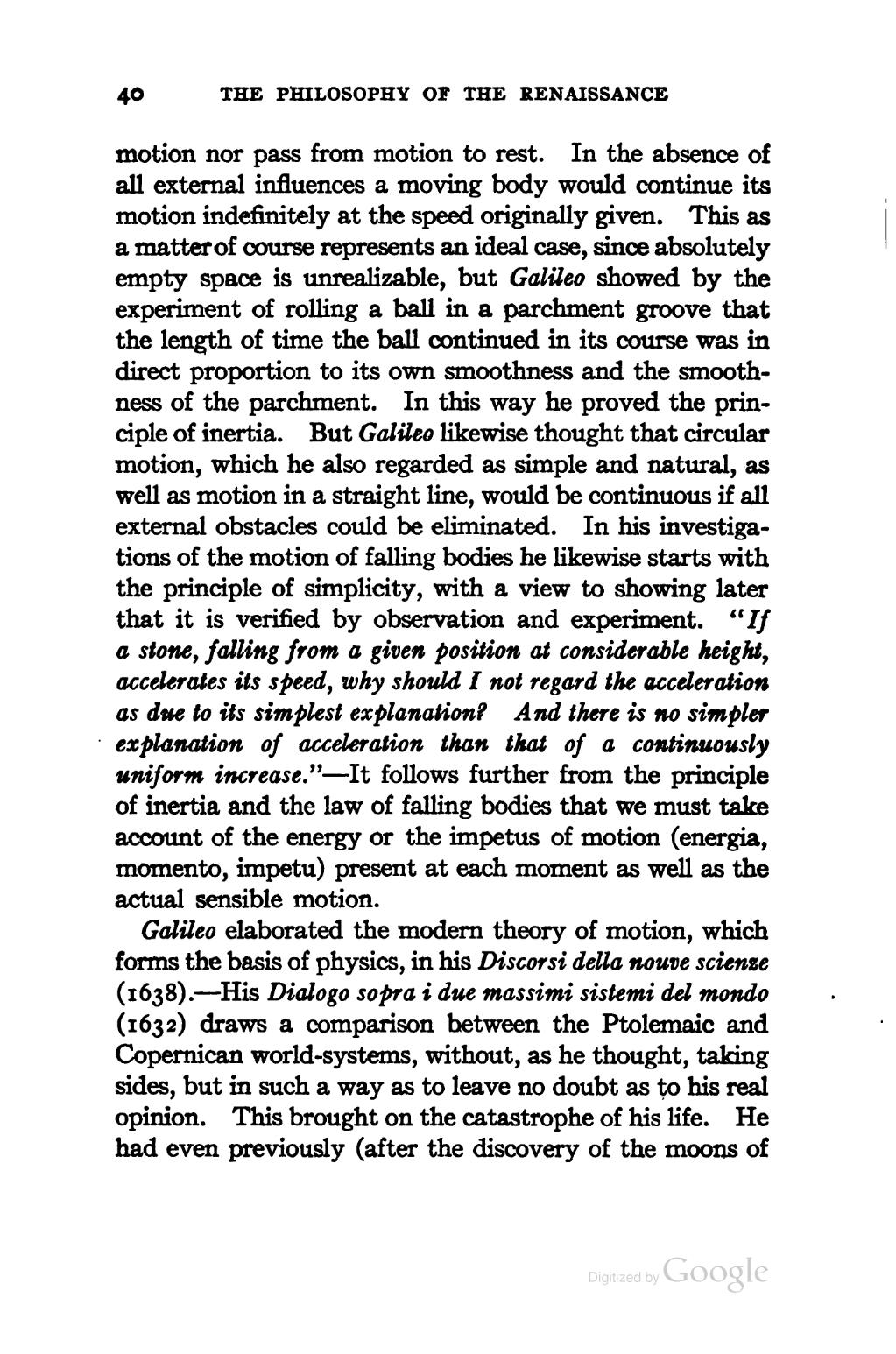motion nor pass from motion to rest. In the absence of all external influences a moving body would continue its motion indefinitely at the speed originally given. This as a matter of course represents an ideal case, since absolutely empty space is unrealizable, but Galileo showed by the experiment of rolling a ball in a parchment groove that the length of time the ball continued in its course was in direct proportion to its own smoothness and the smoothness of the parchment. In this way he proved the principle of inertia. But Galileo likewise thought that circular motion, which he also regarded as simple and natural, as well as motion in a straight line, would be continuous if all external obstacles could be eliminated. In his investigations of the motion of falling bodies he likewise starts with the principle of simplicity, with a view to showing later that it is verified by observation and experiment. “If a stone, falling from a given position at considerable height, accelerates its speed, why should I not regard the acceleration as due to its simplest explanation? And there is no simpler explanation of acceleration than that of a continuously uniform increase.”—It follows further from the principle of inertia and the law of falling bodies that we must take account of the energy or the impetus of motion (energia, momento, impetu) present at each moment as well as the actual sensible motion.
Galileo elaborated the modern theory of motion, which forms the basis of physics, in his Discorsi della nouve scienze (1638).—His Dialogo sopra i due massimi sistemi del mondo (1632) draws a comparison between the Ptolemaic and Copernican world-systems, without, as he thought, taking sides, but in such a way as to leave no doubt as to his real opinion. This brought on the catastrophe of his life. He had even previously (after the discovery of the moons of
